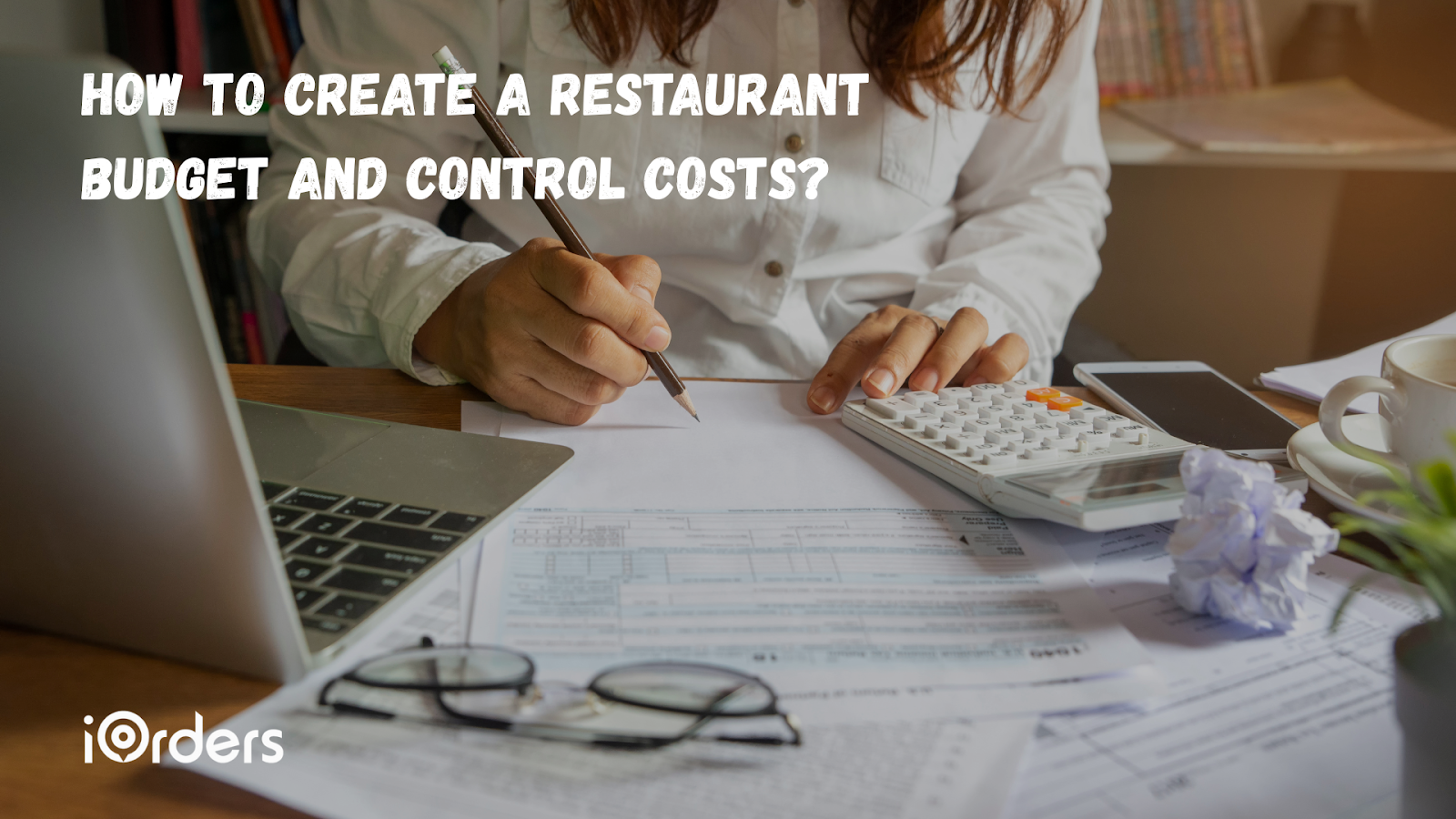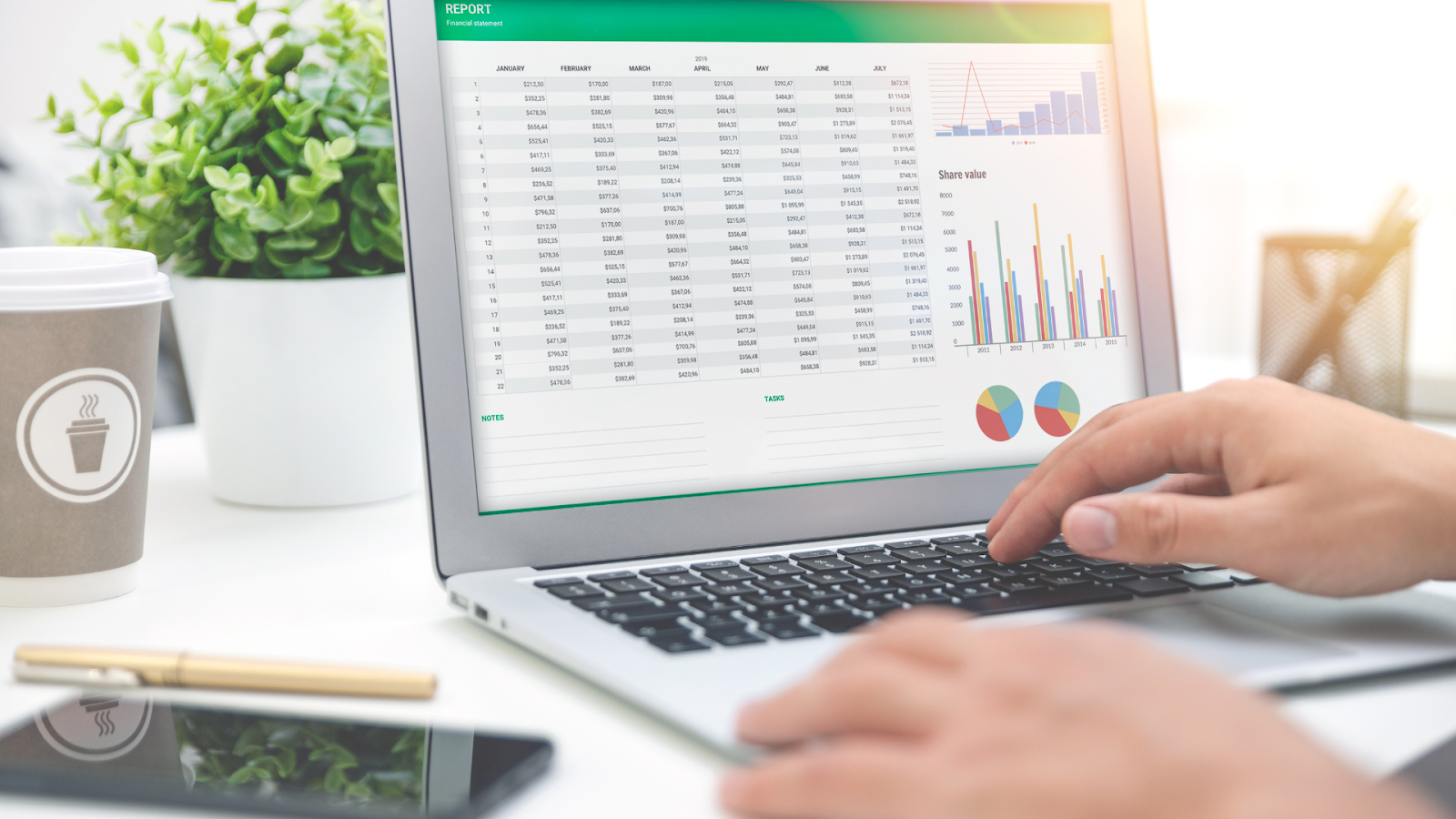July 10, 2025

Many restaurant owners struggle with budgeting due to fluctuating costs, inconsistent revenue, and limited financial knowledge. Without a solid plan, they risk overspending, underpricing, or missing growth chances. Poor financial management is a main reason for closures.
The restaurant industry has rebounded strongly after the pandemic, with U.S. sales expected to hit $1.5 trillion by 2025. In this fast-paced environment, creating a detailed budget is not only advantageous but also crucial for maintaining profitability and managing economic uncertainties.
This blog will guide you through the process of creating a robust restaurant budget, highlighting the importance of each step and how it contributes to cost control and profitability.

A restaurant budget is a financial plan that projects income and expenses over a specific period (typically a month or year). More than just a tracking tool, it's a proactive instrument enabling owners to plan, anticipate issues, and make timely corrections. By forecasting revenue and costs, a robust budget facilitates informed decisions, strategic resource allocation, and ultimately ensures the business's financial stability and profitability.
A restaurant budget covers a wide range of expenses and potential revenue sources.
Having a solid budget offers the following benefits:
With a clear understanding of what a budget entails and its advantages, let's now outline the steps to effectively create your restaurant budget for financial stability and growth.
Also read: Restaurant Revenue Management Strategies to Boost Sales

Creating a restaurant budget is a strategic process that involves understanding your restaurant's financial needs and aligning them with your business goals. The key to a successful restaurant budget is accuracy, planning, and regular reviews.
Here is a step-by-step guide to help you build a realistic and effective budget for your restaurant.
Before creating a new budget, assessing previous performance is essential for valuable insights into areas working well and those needing improvement.
Begin by identifying your fixed costs—regular expenses that remain constant regardless of restaurant performance.
Once fixed costs are covered, focus on variable costs, which fluctuate directly with your business volume, such as customer count or menu items sold.
Setting clear revenue and profit targets is crucial for determining the income needed to cover all costs and achieve desired profitability.
Even with careful planning, unexpected circumstances can arise. A contingency fund is essential to cover surprises without straining your finances.
A budget isn't something you create once and forget. To stay on top of your finances, regular reviews are essential.
Now that you have a step-by-step process for creating and managing your restaurant budget, let's see how you can accurately estimate your monthly restaurant revenue with confidence.
Also read: How Much Does it Cost to Open a Bakery in 2025?

Estimating your monthly restaurant revenue is crucial in budgeting. A realistic estimate aligns your budget with expected income, aiding financial planning. It involves analyzing historical data, market trends, and seasonality.
Here's how you can estimate your restaurant's monthly revenue effectively:
The best way to forecast future revenue is by reviewing past sales data. Historical data provides insight into your restaurant's performance, helping you predict future trends with greater accuracy.
While historical data is essential, other methods can enhance your revenue forecast:
Let's explore tips for managing your finances more effectively and maximizing profitability in the next section.
Also read: Proven Strategies for Cost Control in Restaurants

Smarter budgeting involves utilizing your financial data to make informed decisions that boost profitability. By optimizing key areas of your restaurant's operations, you can stretch your budget further, cut waste, and increase revenue.
Here are some valuable tips for smarter budgeting:
Modern technology can help streamline your restaurant's operations, reduce costs, and improve efficiency. Investing in the right tools can pay off in the long run by automating manual tasks and providing real-time data.
Cash flow is the lifeblood of your restaurant, and maintaining a close eye on it ensures you can cover expenses and reinvest in your business when needed.
Marketing is crucial for attracting and retaining customers, making a clear budget essential. Without one, restaurants risk overspending on ineffective strategies or missing growth opportunities.
Maintaining strong relationships with vendors is important, but regularly assessing pricing and negotiating for better deals is equally crucial. This has a significant impact on reducing costs.
Having covered these valuable budgeting tips, it's equally important to be aware of potential pitfalls. Let's now examine common budgeting mistakes that can derail your financial planning.

Even with a well-planned budget, pitfalls can disrupt your financial strategy. Recognizing these common mistakes will help you stay on course, ensuring your budget effectively controls costs and boosts profitability.
Here are some key budgeting mistakes to avoid:
Labor is one of the highest expenses in the restaurant industry, and underestimating it can lead to financial strain. Many restaurant owners fail to account for the full cost of labor, including overtime, benefits, and taxes.
Unexpected expenses are inevitable, whether it's equipment failure, supply shortages, or changes in food costs. Without a contingency plan, your restaurant could face a financial crisis when these events arise.
Revenue often fluctuates depending on the season. Ignoring trends can cause budget discrepancies, especially in markets where customer traffic varies significantly between seasons.
For example, you should increase your marketing budget in the off-season to maintain customer interest or allocate more resources to staffing during peak periods.
Marketing is crucial, but it's easy to overspend without tracking campaign effectiveness. Many restaurant owners allocate too much to advertising or promotions without seeing a corresponding return on investment, leading to wasted funds.
Having identified these common budgeting mistakes, let's now explore how a restaurant budget can actively help you maintain cost control and profitability.

A well-planned restaurant budget helps control costs and boost profits by monitoring expenses, adjusting as needed, allocating resources efficiently, and tracking performance.
Here's how a well-structured budget can help you control costs effectively:
A budget allows restaurant owners to pinpoint inefficiencies and cut costs without sacrificing quality or service. By regularly tracking both fixed and variable expenses, you can identify areas like food waste, excess inventory, or underused labor hours, enabling informed decisions on where to save and where to invest strategically.
An effective budget ensures that your restaurant's resources, like money, time, and staff, are allocated wisely to maximize profitability. By allocating funds based on priorities, you can support areas that drive revenue and growth.
Aligning your budget directly with profitability goals is key to controlling costs and meeting revenue targets. It clearly illustrates what sales are needed to cover fixed and variable costs and achieve desired profit margins by ensuring cost allocations (for food, labor, etc.) are proportional to expected revenue for balanced and profitable operations.
Understanding the role of a budget in cost control is vital. Let's now explore how iOrders can assist in forecasting and preparing your restaurant's budget.

Creating and managing a restaurant budget can be complex, especially with variables like sales, inventory, and labor costs. iOrders offers tools to simplify budgeting, providing valuable data insights and operational efficiencies.
Here's how iOrders can support restaurant owners in forecasting and preparing a more accurate and efficient budget:
iOrders consolidates all your revenue data into a single dashboard, simplifying performance tracking and informed decision-making.
By analyzing historical data and customer behavior, iOrders provides actionable insights that help predict future revenue and adjust budget targets.
It allows restaurants to plan for seasonal variations, busy periods, and marketing campaign effectiveness.
iOrders helps streamline operations, reducing the time and effort spent on manual tasks, which ultimately leads to cost savings.
The more efficient your operations, the easier it becomes to manage costs effectively and stay within your budget.
Technology costs can be a significant burden for restaurants, especially when it comes to maintaining a website, mobile app, and ordering system.
It helps reduce these expenses by offering a branded solution, which eliminates the need for separate tech development and maintenance.
iOrders offers integrated marketing solutions that help restaurants drive customer engagement, build loyalty, and boost revenue.
Effective budgeting is vital for a successful restaurant. By strategically managing fixed and variable costs and forecasting revenue, you can increase profitability, enhance operations, and ensure long-term financial stability.
iOrders helps restaurants boost revenue, cut unnecessary costs, and predict financial results more precisely. Its smooth tools support better resource management, enabling restaurant owners to direct funds where they are most needed and increase profits while staying within a robust budget.
Take the first step toward optimizing your restaurant's financial performance. Contact iOrders today to explore how our solutions can drive profitability and efficiency.